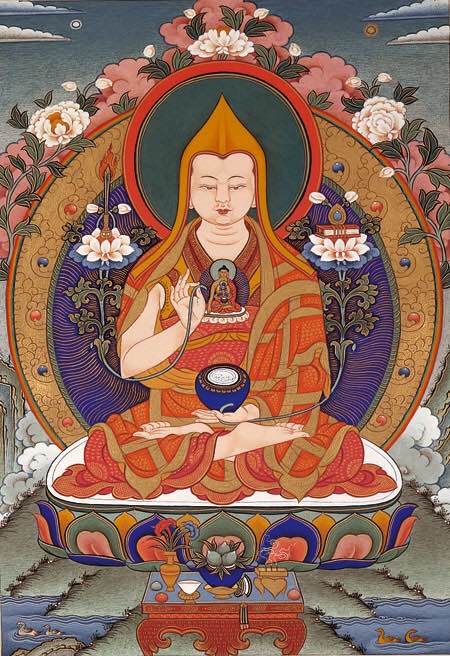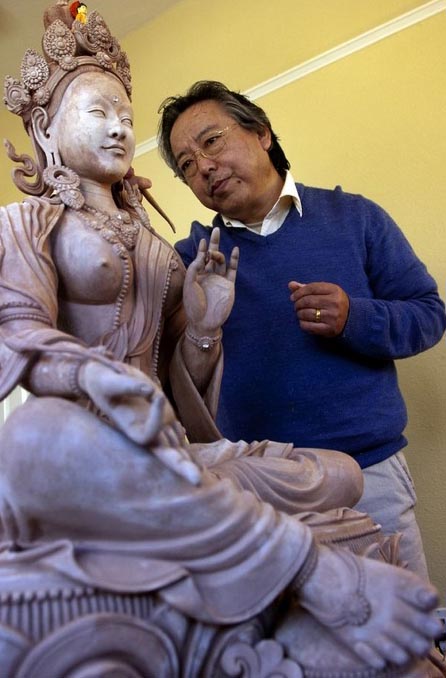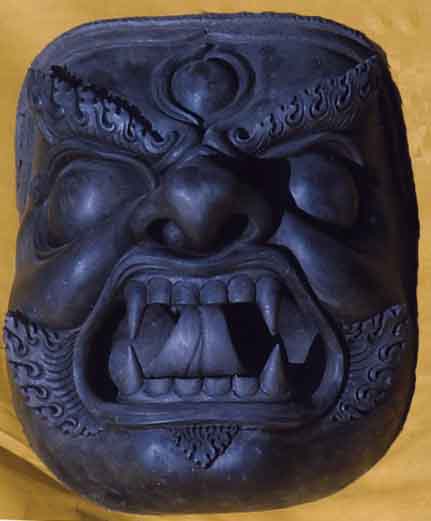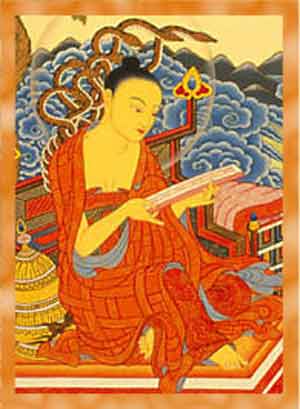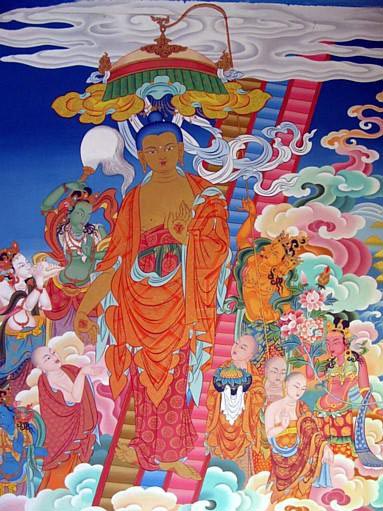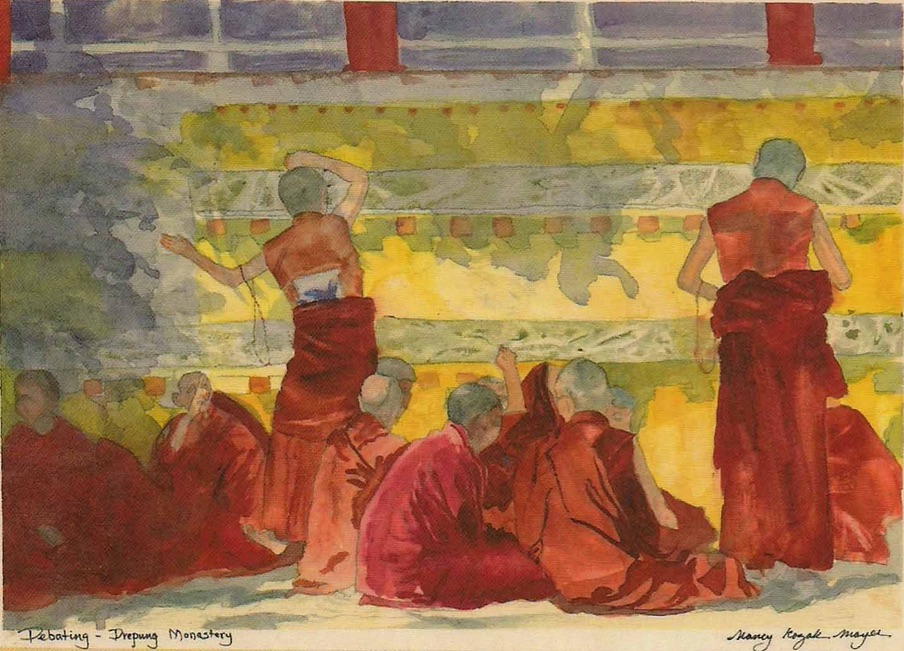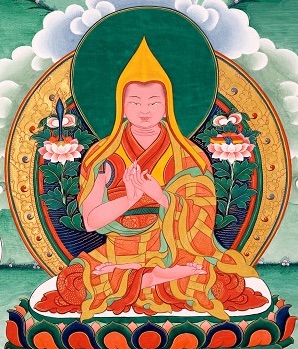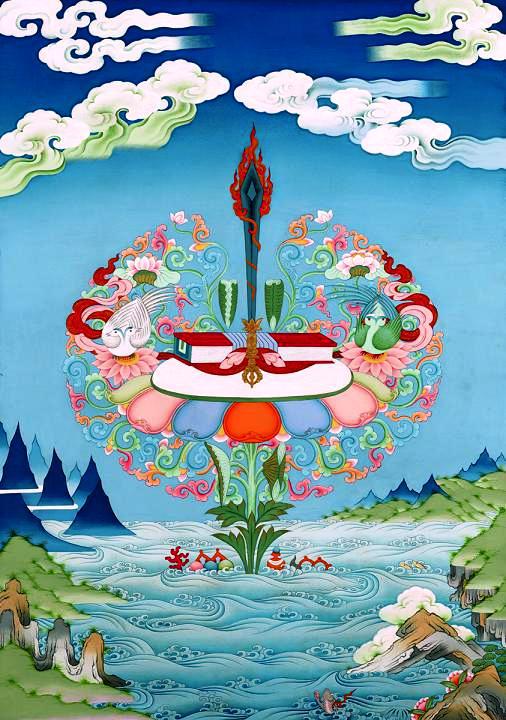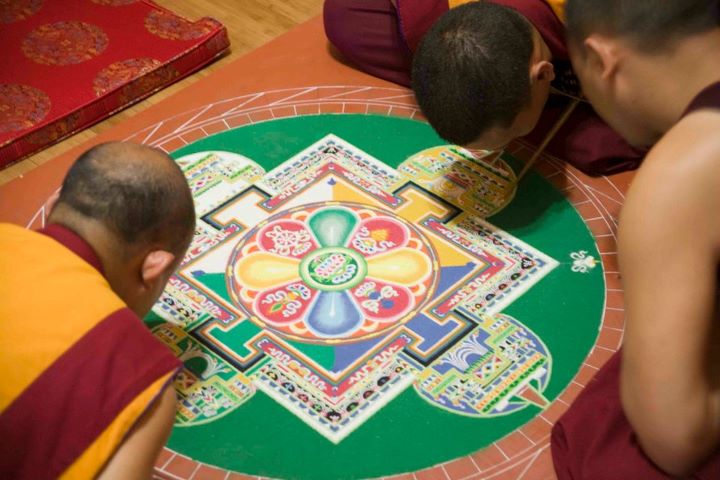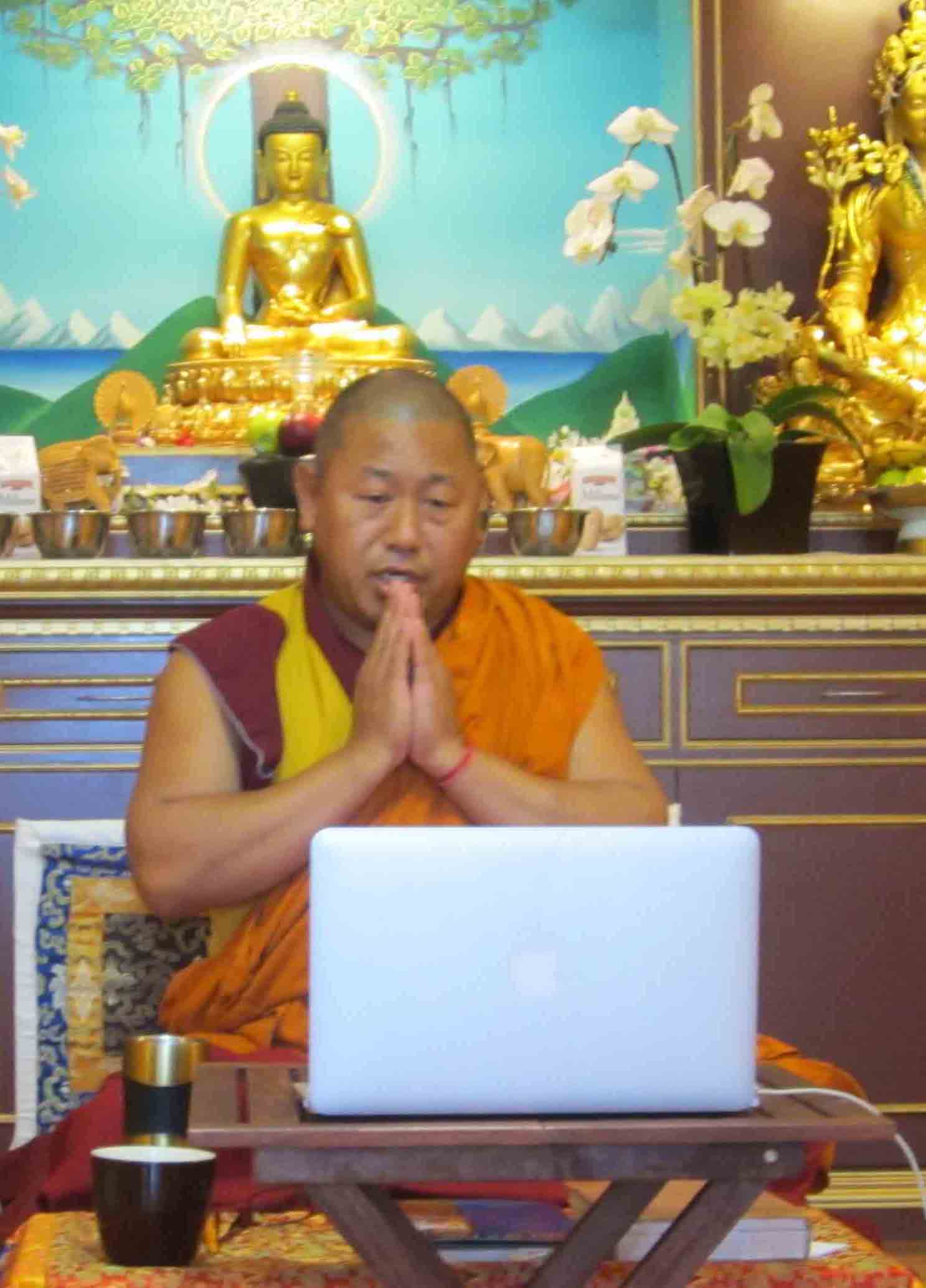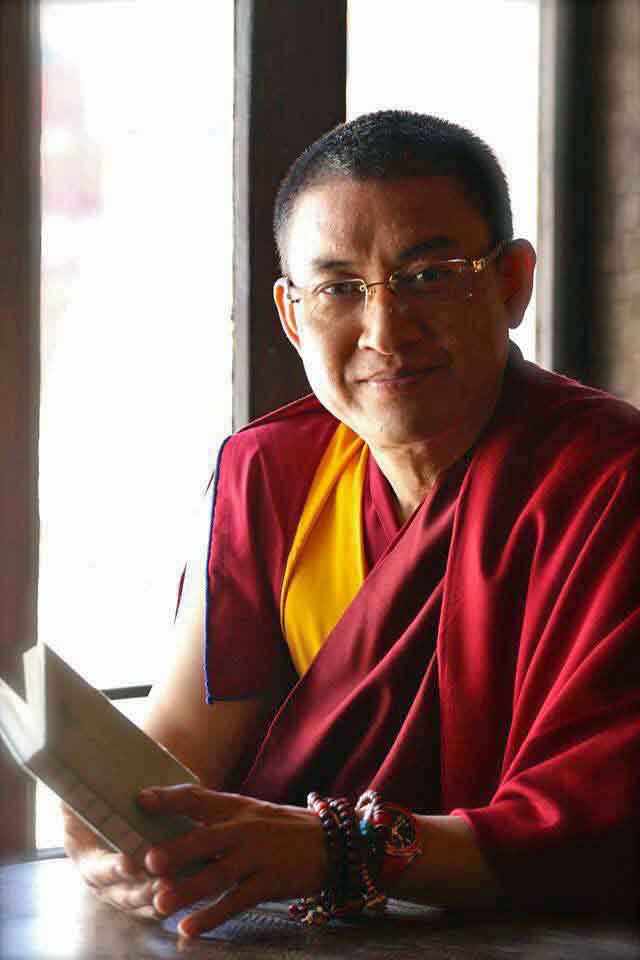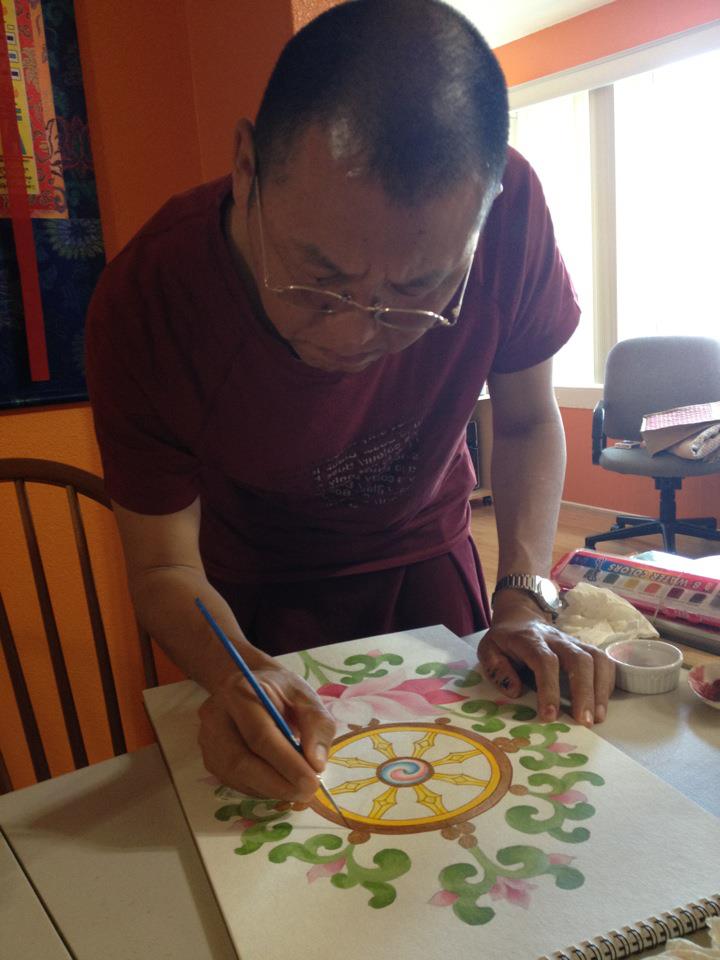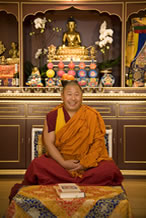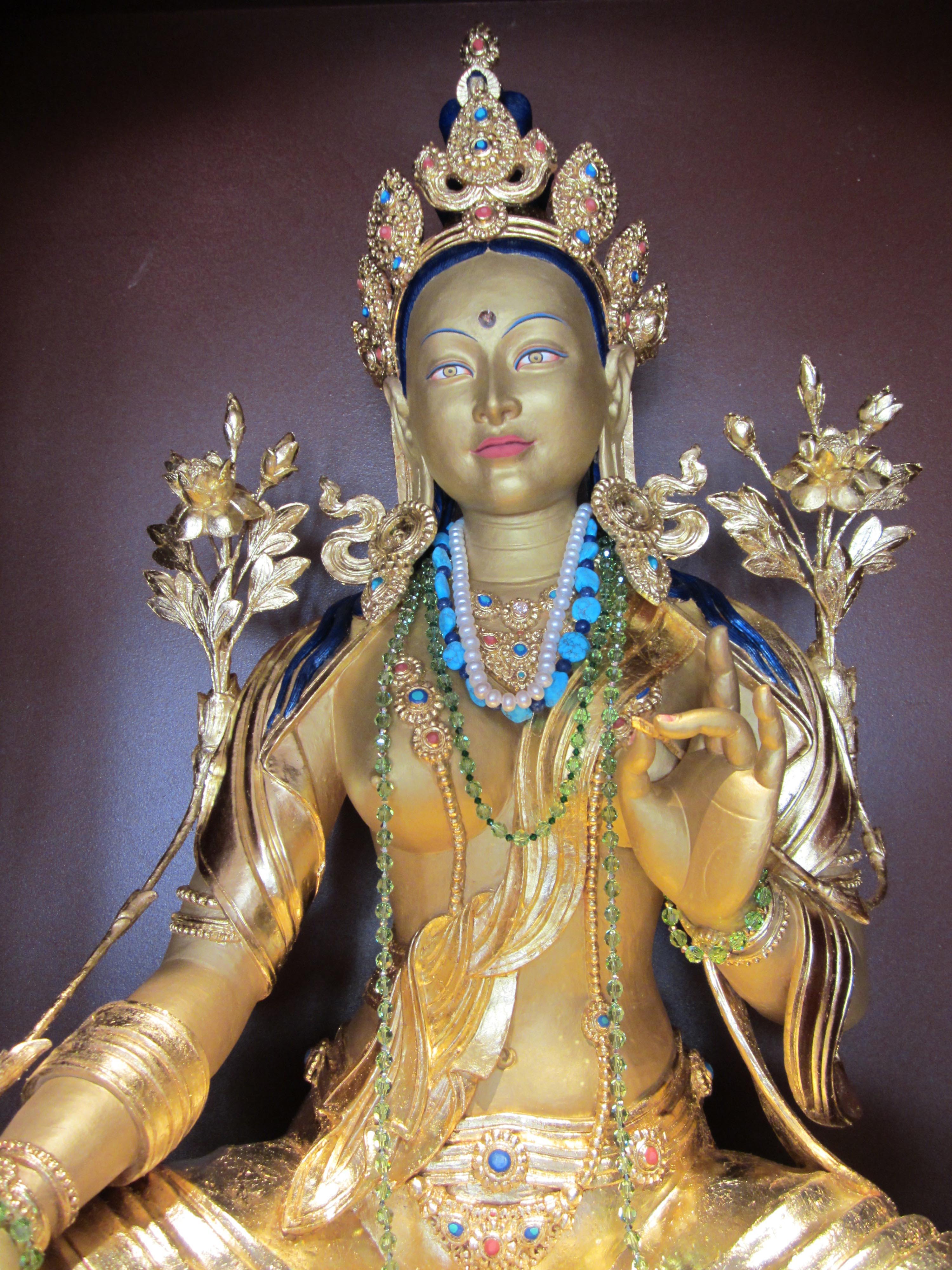|
DECEMBER 20, 2011
LAMA TSONGKHAPA DAY - GURU PUJA
|
|
Land of Enlightened Wisdom Center celebrates the achievements of the saint and scholar Lama Tsonkhapa. Lama Je Tsongkhapa is revered as a well known Tibetan scholar, saint and teacher. Lama Je Tsongkhapa (1357-1419) was born in Amdo, in northeast Tibet. Tsongkhapa left Amdo at sixteen to further his studies, studying under fifty teachers and gaining a wide knowledge of both sutra and tantra, being especially impressed with Dignaga and Dharmakirti’s system of reasoning. There followed an intense period of study and meditation, during which he experienced visions of Manjushri. He is founder of the Gelugpa tradition of Tibetan Buddhism, built on the foundations |
|
of the Kadampa tradition, the legacy of Atisha. Je Tsongkhapa was also a prolific writer, and left eighteen volumes of collected teachings containing hundreds of titles, among the most important texts in Tibetan Buddhism, including the seminal text on Guhyasamaja tantra. Some of his most important works include: The Great Exposition of the Stages of the Path (Lamrim Chenmo) and The Great Exposition of Tantras (sNgag-rim chenmo). |
|
DECEMBER 10 - 11, 2011
MAHAKALA WEEKEND INTENSIVE
|
|
We were fortunate to have Kalsang Lodoe Oshoe to teach the Mahakala Mask Workshop. Mr. Oshoe, a Tibetan Master Thangka Painter and Sculptor established a Traditional Tibetan Art school in Dharamsala, India where future sculptors and artists are trained in artistic traditions of classic Tibetan fine arts. Mr. Oshoe belongs to a prominent family of Tibetan artisans and serves as an official court painter to the HH Dalai Lama. In the past, he has worked on projects at Smithsonian Museum in Washington DC, Springfield Museums in Massachusetts, Tibet House in New York, and other prestigious museums in the US and Europe. His latest work was completed this June in Japan. Mr Oshoe spent 3 month at the Land of Enlightened Wisdom center sculpting and bringing to life Arya Tara |
|
which he completed in December 2011. An article was written by the Inland Valley Tribune. |
| Mahakala is an emanation of Avalokiteshvara in his wrathful form. He appears as Mahakala to defeat the delusions. Mahakala is a wrathful dharma protector for the Mahayana practitioner. Mahākāla is a Sanskrit bahuvrihi of mahā "great" and kāla "Black". Mahākāla is relied upon in all schools of Tibetan Buddhism. We feel deeply honored to be able to offer this class at the center and hope you will be able to attend this very precious opportunity to learn more about Tibetan ritual art. Workshop cost is $55.00 Materials will be provided. Art media is clay. |
|
DECEMBER 4, 11, and 18, 2011
THE PRECIOUS GARLAND BY ARYA NAGARJUNA
|
|
The Precious Garland or Ratnavali discusses the complete pathways to enlightenment. It provides antidotes to deal with our delusions and cultivate compassion and wisdom to be able to realize our fullest potential to be Buddha or Enlightened Being. This course will explain this poetic yet profound treatise of Arya Nagarjuna to enhance our spirituality.
|
|
NOVEMBER 10-17, 2011
LHA-BAB DUCHEN - GURU PUJA
FISH LIBERATION |
|
Lha-Bab Duchen marks the anniversary of the Buddha’s descent from the heavenly realm to the earth to give teachings to benefit his mother and the gods in the desire realms, and to repay the kindness of his mother by liberating her from Samsara. This is considered to be one of the great eight deeds of the Buddha among eight great deeds. On Lhabab Duchen, the effects of positive or negative actions are multiplied ten million times. It is taught throughout the Buddha's teachings and their commentaries that the effects of virtue and wrongdoing are billions of times more powerful on the four great occasions connected with the Buddha's life. |
|
OCTOBER 30, 2011
KNOWING, NAMING & NEGATION
Sautranitak School of Buddhism
|
|
This course will focus on Sautrantika’s perspective in understanding realities and mindsets. This system describes how thought and direct perception know their objects, negative and positive phenomena and generally and specifically characterized phenomena. Sautrantika School is one of the four major schools. It is basis for the understanding of Madhyamika school of thought. |
|
Text: "Knowing, Naming & Negation" by A. Klein Oral Commentary, Geshe Belden Drakba, Denma Locho Rinbochay, and Kensur Yeshay Tupden. |
|
OCTOBER 16 and. 23, 2011
THE THREE PRINCIPLES OF THE PATH
|
|
This profoundly moving poem explicates the three principle paths which are: renunciation, Bodhicitta and wisdom gone beyond. Without these paths there is no way to attain either liberation from Samsara or complete enlightenment. This course will explain each of these paths, their importance and how to cultivate them. |
|
SEPTEMBER 24, 2011
LO-RIG: AWARENESS AND KNOWING
|
|
Lo-Rig means Awareness and Knowledge. It is the study of consciousness, of mind. Pure in its essential nature, the mind is stained by adventitious defilements. These defilements can be removed. Understanding the mind is essential to understanding Buddhism in both its theoretical and practical aspects. The process of achieving enlightenment is one of systematically purifying and enhancing the mind. Geshe Sherap believes that students who study with enthusiasm will gain a deeper knowledge in how to deal with disturbances of the mind. There are three categories of Buddhist study: Science, Philosophy, |
|
Lo-Rig falls in the category of Science. It is not necessary to be a Buddhist to benefit from the study of Lo-Rig. |
|
Text: "Mind in Tibetan Buddhism," by Lati Rinbochay, Elizabeth Naper and can be purchased at the center. |
|
OCTOBER 2, 2011
FISH LIBERATION
|
|
Liberating animals who are in imminent danger of losing their life, is considered very precious in the Mahayana tradition, as every sentient being, no matter how small, values their life more than anything else. The animal liberation practice is based on the fundamental principle of non violence to that life. This practice emphasizes the aspiration |
| to develop great compassion, wisdom and to dedicate one’s spiritual life for the welfare of all sentient beings. |
|
AUGUST 16-21, 2011
AVALOKITESHVARA SAND MANDALA
MONKS OF THE GADEN JANGTSE TSAWA MONASTERY
|
|
The Avalokiteshavara Sand Mandala was created with the intention to generate world peace and compassion. Using ancient techniques and profound devotion, the monks create intricate sand portraits of the celestial mansions of enlightened beings. It is believed that simply seeing one of these sacred mandalas leaves a powerful positive karmic imprint on our mind streams. To read more about the Tsawa Monks Visit. |
|
Gaden Jangtse Tsawa Monastery is one of the three main Buddhist monastic universities of Tibet. It was founded by Je Tsongkhapa Lobsang Dakpa in 1409. Gaden Monastery has two parts: Gaden Jangtse and Gaden Shartse. Within Gaden Jangtse, there are twelve houses (khangtsen) and Tsawa Khangtsen is one of these; it is one of the largest khangtsens, serving the Himalayan regions of Tibet, Arunachal Pradesh (India), Bhutan, Ladakh and Nepal.
|
|
JUNE 24-26, 2011
ABIDHARMA: NIRVANA AND BUDDHIST PSYCHOLOGY
|
| Location: Namgyal Monastery, Ithaca, NY
Instructors: Geshe Sherap The Abidharma-kosa is a fundamental Buddhist text written by Vasubandhu. The text contains eight chapters that cover a wide range of topics related to Buddhist world view and philosophy. This class will provide overview and teachings on the Nirvana and Buddhist Psychology as presented in this text. Topics covered will include description of different mental factors, how they are related to the delusions of attachment, aversion and ignorance and how mind training and other antidotes can be used to overcome these delusions |
|
JUNE 18, 2011
THE BARDO: INTERMEDIATE STATES OF EXISTENCE
GOCHA RINCPOCHE
|
|
Antarabhava is Tibetan for the Bardo, the intermediate states of existence after death. There are stages of existence between 2 lives on earth. Ven. Gocha Tulku introduced these different stages. Gocha Tulku Rinpoche teaches in Nepal, India, Taiwan and USA. He is the 5th Reincarnation of Gocha Lineage, recognized by HH the 14th Dalai Lama. Gocha Tulku is the founder and supreme head of the Tawu Nyi Tso Monastery in Sinchuan, Tibet. Monks come to Gaden Jangstse Monastery in India to study Buddhism under his guidance. |
|
JUNE 11-12, 2011
TIBETAN ART WORKSHOP
LEARN BUDDHIST THANGKA ART
ARTIST YESHI DORJEE
|
|
We had the honor to offer this unique opportunity to study with respected Artist Yeshi. As a two time Smithsonian Museum Celebrated Artist, he shares with us his art as a Meditation Practice. His light hearted humor and easy going style is rich with the wisdom of playful innocence, joy and laughter! Cost: $30.00 with Saturday lunch included. Materials List: HB Pencil, 2B Charcoal Pencil, Rubber eraser, Water color and color plate, Fine brushes # 1, 3, 6. Water color paper between 12"or 20" Small water container, and Watercolors Paints will be provided by the instructor
|
|
SPETEMBER 10, 2010
MIDDLE WAY SCHOOL
GESHE TENZIN SHERAP
|
|
Geshe Sherap began teaching the first presentation of Fundamental of Middle Way at Land of Enlightened Wisdom since the opening center in May 2010. The Middle Way School is one of the higher schools of Buddhist thought. It consists of two schools: Svatantrika Madhyamika and Prasangika Madhyamika. According to Tibetan Buddhism, Prasangikas are the highest authority on the nature of reality. Arya Nagarjuna and Acharya Chandrakirti are the greatest authority figures elucidating the Prasangika Madhyamika School of Thought. |
|
This five year class began on September 10, 2010 and concluded on October 23, 2015. The second presentation of the Middle Way School class at LEW center began immediately on the very day the first class ended, October 23, 2015 and is on-going today in 2018. |
LEW Projects

